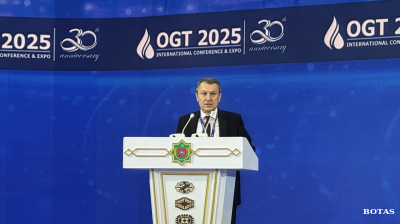Every year bne IntelliNews releases a series of reports on all the markets in our region. These reports take a look forward to the main events of the upcoming year and try to identify the trends that will spill over which are already identifiable.
Ukraine’s economy bounced back strongly in 2021 following a deep recession in 2020 caused by the coronavirus (COVID-19) pandemic, but by the summer that growth was slowing more than expected as the low base effects wore off.
Ukraine’s economy is still working well below potential due to the low investment, lack of progress with reforms and the ongoing conflict with Russia that are hurting the business climate and dissuading investors.
Ukraine has attracted very little foreign direct investment (FDI) as although incomes are now rising much more quickly, the country risks remain very high, as illustrated by the talk of war with Russia in the last two months of the year and the free rein given to the country’s oligarchs.
FDI fell from a recent peak of $5.2bn in 2019, the last year of strong growth, to a mere $215mn in 2020 and remains depressed due to the political instability. The government’s poor treatment of investors into the renewables sector – one of the only sectors to have attracted substantial foreign investment – has also weighed on the investment climate and has stymied the investment into green power that was ongoing.
The one area where Ukraine has successfully attracted some foreign investment is in retail, where several large multinational retailers such as Sweden’s IKEA and Germany’s METRO have moved in. These companies are early movers in transition economies and their arrival is an encouraging sign, as it says they believe that Ukraine is at the beginning of long-term sustainable recovery. However, the pace of that recovery continues to disappoint.
Renewable energy investors were attracted by the generous green power tariffs offered by the Poroshenko administration. However, the tariffs proved to be too generous and the government has failed to meet its obligations, running up a $1bn debt for unpaid power bills. That was settled finally in the fourth quarter of 2021 with the issue of a Eurobond by the state-owned power company Ukrenergo, but the failure to pay and the government’s attempts to retroactively renegotiate the tariff hurt Ukraine’s already poor investment image.
The problems have led to various downgrades for Ukraine’s growth outlook. The government downgraded its official forecast for 2021 from 3.4% from the 4.1% predicted in April. Economic growth in 2022 was also downgraded slightly to 3.6% instead of 3.7%. According to the Ministry of Economics, the revision of indicators is mainly due to the slowdown in investment growth and challenges and threats of post-pandemic development.
IMF downgraded Ukraine's GDP growth estimate to 3.2% from 3.5% in the October forecast. However, the IMF has left Ukraine's economic growth expectations in 2022 unchanged at 3.6%, and in 2023 at 3.4%. And JP Morgan sharply downgraded its forecast from 4.5% to 2.3% in 2021, while maintaining an expectation of 5% growth in 2022.
Inflation has been the main macroeconomic problem. After crushing inflation in 2019, which fell to a post-Soviet all-time low of below 2% in May 2020, inflation roared back in 2021 to peak at 11% in September before starting to fall as a series of aggressive rate hikes began to take effect. The outlook for inflation is to end at 10.6% in 2021 before falling to 6.5%, according to the official forecast.
Read the full report here.
Download the pdf here.
Features

Washington has a new focus on a Caspian energy play
For most of the last three decades since winning independence, Central Asia has been a bit of a backwater. Not any more. The Trump administration is becoming more focused on Turkmenistan's vast gas reserves and can smell money and power there.

BOTAŞ and Turkey’s hub ambition: from “30-year dream” to cross-border reality
For Ankara, the symbolism is as important as the molecules: Turkey’s energy map is shifting from end-market to hub.

Indian bank deposits to grow steadily in FY26 amid liquidity boost
Deposit growth at Indian banks is projected to remain adequate in FY2025-26, supported by an improved liquidity environment and regulatory measures that are expected to sustain credit expansion of 11–12%





